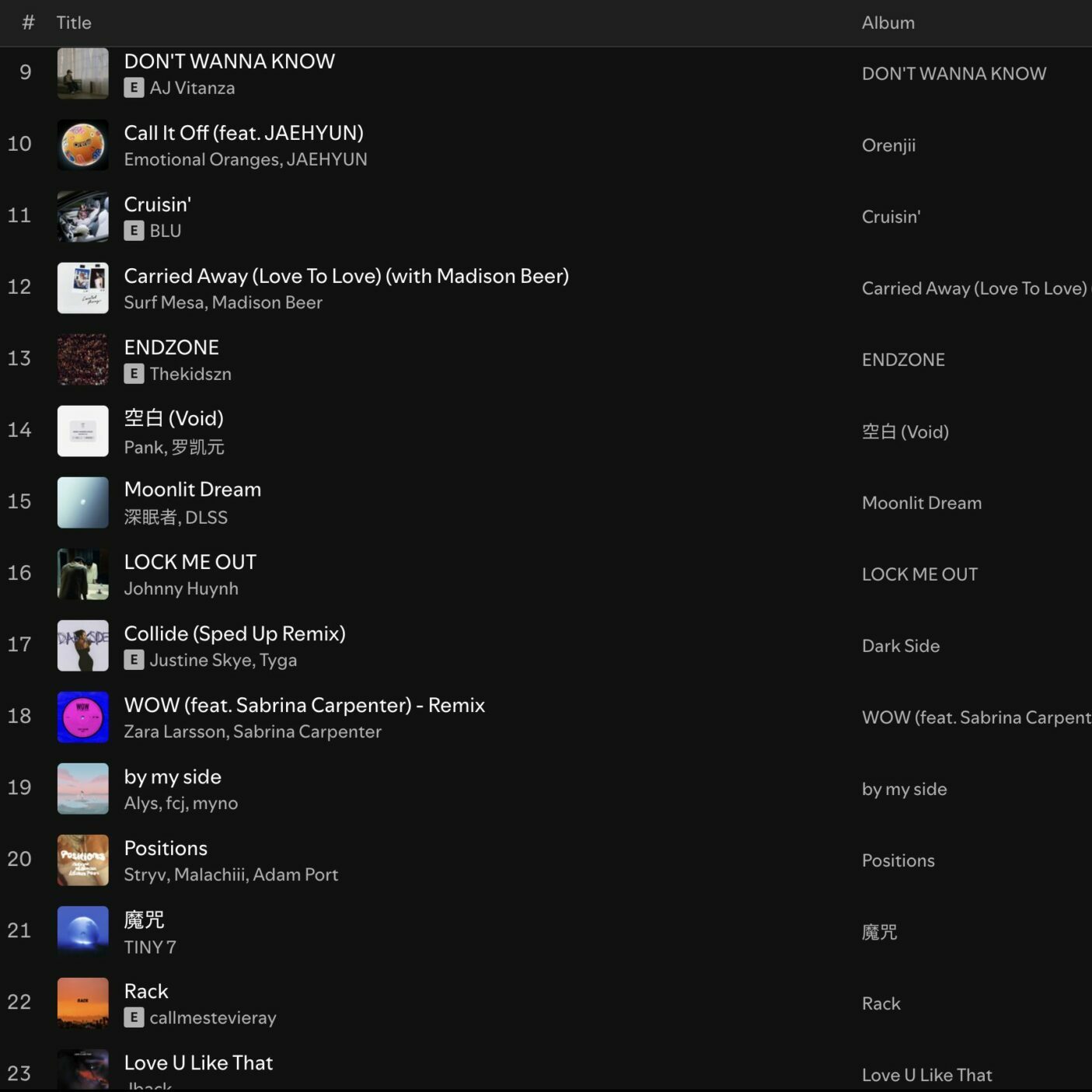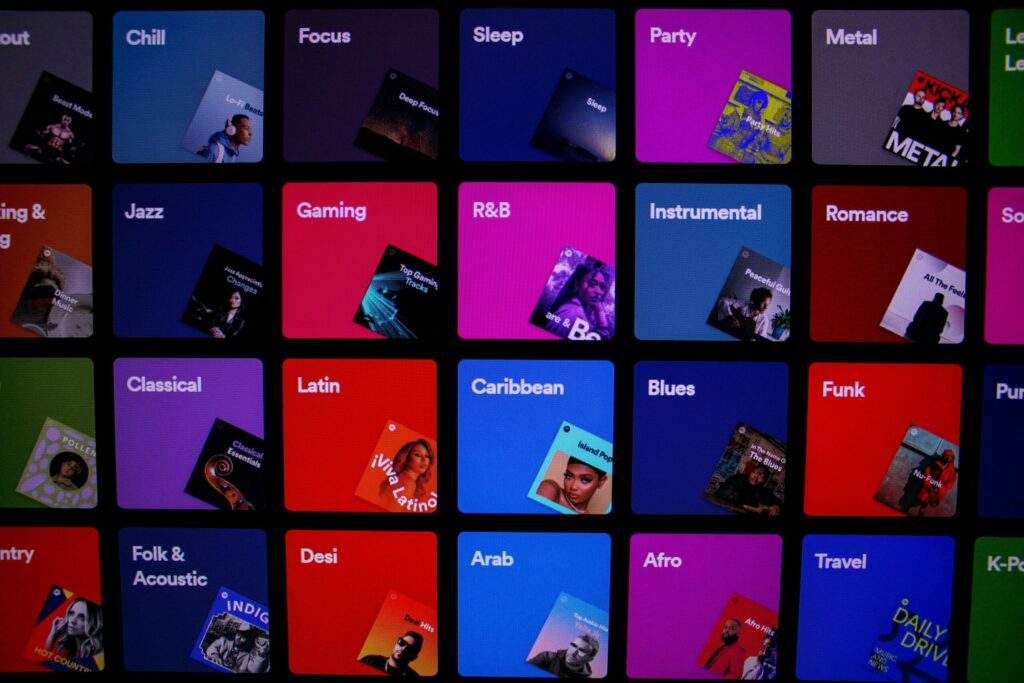Digitalization has transformed music consumption into streaming, and discovering a song no longer seems to be just about curiosity, but rather about code, data, and algorithms (Bello & Garcia, 2021). Spotify is typically the first streaming platform that comes to mind, as it has more than 713 million users worldwide (Spotify, 2025a). With such an influential market position, what exactly is Spotify’s role when it comes to music?
Back in 2018, Daniel Ek, the CEO, stated this in the company’s US registration statement:
Our mission is to unlock the potential of human creativity by giving a million creative artists the opportunity to live off their art and billions of fans the opportunity to enjoy and be inspired by it […] We’re working to democratize the industry and connect all of us, across the world, in a shared culture that expands our horizons (Spotify Technology S.A., 2018, pp. 92-93).
Essentially, Spotify positions itself as a platform that democratizes music by connecting artists and listeners worldwide, thereby empowering artists’ creativity through scalability (Hodgson, 2021). Thus, the following article will examine how Spotify’s recommendation algorithm system operates and whether it genuinely democratizes music or, conversely, restricts musical diversity and global discovery.
How Spotify’s Recommendation System Works?

Spotify’s recommendation algorithm relies on three key components: content-based filtering, collaborative filtering, and feedback to analyze its users, artists, tracks and its own suggestive performances. Let us dive into each model!
Content-based filtering
This model aims to analyze a large volume of content and organize it to effectively describe a song. It does so through these three processes:
- Collecting metadata: It involves reading the basic information typically provided by the record label, such as track title, genre, artist name, and release date. It basically identifies the song’s tags.
- LLMs (Large Language Models): They scan and analyze all available content surrounding the artist and their song, including lyrics, cover art, social media reviews, and more. It allows for the positioning of the artist and their song in relation to others.
- Audio analyzing model: This analyzes the song’s vibe through metrics such as danceability, energy, and key signature. Such analysis is instrumental when creating playlists, like “Chill Mix” or “Shower Mix.”
Collaborative filtering
This model is more consumer-focused, as it examines how users interact on Spotify and compares their behaviour with that of other users.
- It analyzes the user’s preferences through metrics such as skip rate, saved playlists, and streaming counts, and by compiling the listener’s profile information, including their gender, age, and location, to further personalize their recommendations.
- It compares users’ behaviours and examines “organizational similarities” to position the track in relation to others who consume similar music, determining whether to suggest a song to the user through metrics such as the way they add songs to specific playlists to identify any similar patterns.
Feedback
Then, when the playlists and songs have been recommended, the system optimizes itself through users’ feedback. Here are the two types of feedback:
- Explicit: like through clicks on following the artist and/or on adding a song to a playlist.
- Implicit: like through repeated listens and/or listening-session lengths.
All of this data combined allows the algorithm to calculate the degree of relevance of each song suggested to a user (Robinson et al., 2020). For some playlists, such as Made for You, Spotify’s editorial staff is responsible for evaluating the data and suggesting songs, so humans are still involved in the recommendation process.
This entire section was an intertwined combination of Hodgson (2021) and Pastukhov (2025)’s writings.
Fostering International Exposure

When analyzing data, the recommendation system takes into consideration the cultural backgrounds of both users and the songs. Also, it can establish similarities among listeners and countries. Therefore, some artists are propelled internationally through cross-country behavioural correlations, and this is especially evident in the electronic and EDM musical scene. Countries like Thailand, Belgium, and Germany, renowned for their vibrant festival and nightlife cultures, exhibit similar listening behaviour, allowing emerging artists and DJs from around the globe to gain exposure. Similarly, the audio recognition model identifies cross-cultural similarities between songs, enabling some artists to reach a broader audience. From my own observation, artists like Tobii, a Swiss-Thai artist (Bad Girls Like You), and CORTIS, a South Korean boy group (FaSHioN), gained international visibility as their songs sounded like American R&B and hip-hop songs. It demonstrates how Spotify’s algorithm can help music transcend borders. Additionally, Spotify’s staff creates editorial playlists and the Made for You playlist through their musical expertise lens, which offers emerging artists exposure (Torabi, 2023). Through these playlists, Spotify states that “over 275K artists [have been] added to at least one editorial playlist,” which testifies to the staff’s diverse musical knowledge (Spotify, 2025b).
Limiting International Exposure
Despite the algorithm’s cultural analysis, the staff’s implication, and Spotify’s stated objectives, studies have shown that algorithmic listening actually reduces diversity in music consumption compared to when users look for a song independently (Anderson et al., 2020). Why? Because the system is programmed as a feedback loop, it prioritizes songs with more data, specifically those considered “safer to recommend” to listeners. This programming has two noticeable effects on musical diversity: it favours popular songs that already possess more global data, marginalizing niche artists, and, combined with some national policies, creates a home bias, where songs from one country, having more consumption data in that country, will typically keep being recommended to users’ from that nation, generating a sort of borderless music culture (Hodgson, 2021; Yu, n.d.). On the one hand, you see cultural convergence with global hits, and on the other, local persistence with national hits (Bello & Garcia, 2021).
Such a marginalizing dynamic is further amplified by algorithms’ numerical biases, such as the conundrum bias that favours certain groups over others and the amplified biases that recommend certain artists more frequently, thereby reinforcing social inequalities and making emerging artists less visible (Torabi, 2023; Yu, n.d.).
Taking a position
Spotify’s biased recommendation system is undermining diverse music consumption.
Spotify’s recommendation system helps its users discover new songs, but in reality, it seems to undermine global diversity. The algorithm works as a ‘filter bubble’ (Anderson et al., 2020). From the listener’s data, it compares new songs to those already loved by users and evaluates the degree of relevance of each new song. What actually happens is that most suggested songs resemble those users are already listening to, so the ‘new’ song will usually culturally align with the user’s existing preferences, thereby limiting overall international and diverse discoveries. Spotify essentially keeps listeners within their comfort zone, as the personalized algorithm aims to perform well, with a high rate of recommended song streams and increased chances of being added to playlists. By doing so, the system reinforces users’ identities and limits the diffusion of cultural expression, thereby limiting open-mindedness, a crucial component for diversity in music consumption.
The following table presents the songs I have been listening to over the past month, categorized by the method of discovery.

As shown, most of my music, 65%, is from organic research, and it seems that, indeed, my music is more diverse and niche than those suggested by Spotify’s algorithm. The platform’s programmed songs are mostly from Western regions and feature the highest number of streams overall. Although small-scale, the following mirrors broader trends observed on streaming platforms, where personalized algorithms tend to favour mainstream content over cultural diversity, while limiting the visibility of niche artists and reproducing structural marginalization in the music industry, where the West dominates.
On that note, Spotify should:
- Create more personalized cultural playlists (other than Discovery Weekly) focused on emerging artists from around the world, featuring songs with similar vibes to those the user is already listening to. It could be playlists by country, genre, popular hit songs from other countries, and so on, to give users a taste of foreign music. Most importantly, put that playlist up front, not hidden as the last suggested one, after those data-generated playlists, which are composed of all songs you already know.
- Adding more playlists curated by editorial staff to get away from all data-generated, biased playlists. The human touch would allow for more diversity and more outside-the-box recommendations.
- Develop features that foster organic discovery, as this has been proven to be the most effective method for diverse music consumption. Features like ‘Exploration mode’ with a global map that would allow users to browse and choose songs by themselves with filters, have a ‘hidden gem’ or ‘regional’ filter while doing research, have a community chat where people share their favourite songs of the moment, and optimize the search bar with integrated ‘Shazam’ kind of program with enabling voice search. These are some ideas of mine.
Spotify’s algorithm is commodifying creativity to become data-driven
Beyond limiting diversity for listeners, the nature of the recommendation system itself is problematic, as it diminishes overall cultural diversity in music by commodifying creativity. As the algorithm is so metric and number-focused, record labels and musicians have begun to produce music specifically to fit the algorithm’s preferences. Producers are now turning art into data-driven outputs, such as ‘Spotify-friendly’ songs, to increase exposure, enhance chances of success, and generate more streams. To achieve this, one technique is to move the “hook” earlier to capture the user’s attention, encouraging them to listen to the song for more than 30 seconds. This translates to a successful, streamed song on Spotify, allowing the system to promote it further, as again, more data is being provided (Hodgson, 2021). Such a system encourages artists to create more homogeneous songs, thereby decreasing uniqueness and diversity within the industry. By encouraging artists to produce data-driven songs, Spotify not only influences what songs listeners choose to listen to but also shapes the music being produced, ultimately fostering a more uniform musical landscape and reinforcing the algorithmic ‘filter bubble.’
Conclusion
So, personalized recommendations and playlists appear to offer access to a broader variety of music; however, due to optimization, biases and feedback loops, they often create a filter bubble, driven by algorithmically selected content, which limits genuine exposure to global and marginalized artists. Overall, Spotify claims to want to provide personalized and relevant playlists to users, as it used to be among friends. However, for the platform, this seems to mean engagement and retention, which in turn translates into revenue and subscriptions (Anderson et al., 2020). Are they really aiming to empower artists’ creativity and diversity? Let me know what you think!
REFERENCES
Anderson, A., Maystre, L., Anderson, I., Mehrotra, R., and M. Lalmas. 2020. Algorithmic Effects on the Diversity of Consumption on Spotify. In Proceedings of The Web Conference 2020 (WWW ’20). Association for Computing Machinery, New York, NY, USA, 2155–2165. https://doi.org/10.1145/3366423.3380281
Bello, P., Garcia, D. Cultural Divergence in popular music: the increasing diversity of music consumption on Spotify across countries. Humanit Soc Sci Commun 8, 182 (2021). https://doi.org/10.1057/s41599-021-00855-1
Hodgson, T. (2021). Spotify and the democratisation of music. Popular Music, 40(1), 1–17. doi:10.1017/S0261143021000064
Pastukhov, D. (2025, Sept. 1). “Inside Spotify’s Recommender System: A Complete Guide to Spotify Recommendation Algorithms (Updated for 2025).” Music Tomorrow. https://www.music-tomorrow.com/blog/how-spotify-recommendation-system-works-complete-guide
Robinson, K., Brown, D., & M. Schedl. (2020). USER INSIGHTS ON DIVERSITY IN MUSIC RECOMMENDATION LISTS. 21st International Society for Music Information Retrieval Conference, Montréal, Canada, https://archives.ismir.net/ismir2020/paper/000311.pdf
Spotify Technology S.A. (2018, Feb. 28). “Form F-1 Registration Statement under the Securities Act of 1933” [Registration Statement No. 333-1639920]. U.S. Securities and Exchange Commission. www.sec.gov/Archives/edgar/data/1639920/000119312518063434/d494294df1.htm
Spotify. (2025a). “About Spotify.” Spotify – For the Record. https://newsroom.spotify.com/company-info/
Spotify. (2025b). “Your Dashboard For Everything.” Spotify – For Artists. https://found.byspotify.com/whats-next
Torabi, N. (2023, Aug. 28). “The Inner Workings of Spotify’s AI-Powered Music Recommendations: How Spotify Shapes Your Playlist.” Medium. https://medium.com/beyond-the-build/the-inner-workings-of-spotifys-ai-powered-music-recommendations-how-spotify-shapes-your-playlist-a10a9148ee8d
Yu, Sid. (n.d.). “Case Study: Artificial Intelligence in Spotify.” Stanford Students in Entertainment. https://static1.squarespace.com/static/62856357b3c6636e1f1a3318/t/6628503031d8987ce5c8e14a/1713918003014/Sid+Yu+SSIE+Winter+Research.pdf
